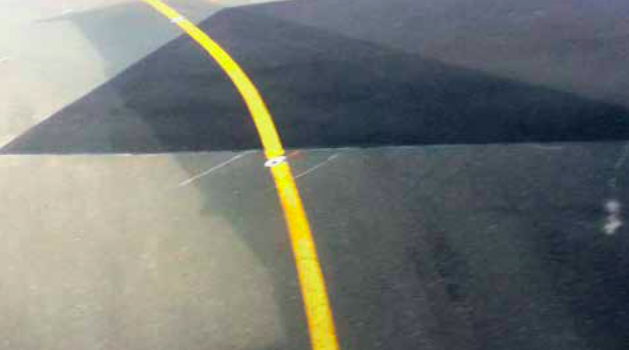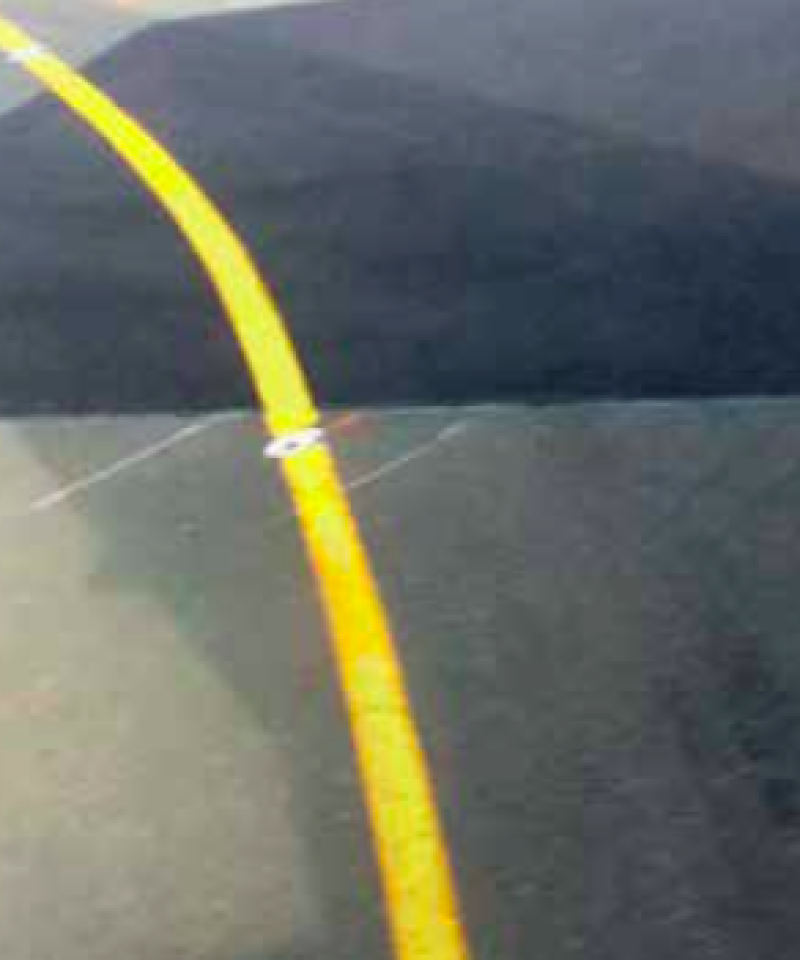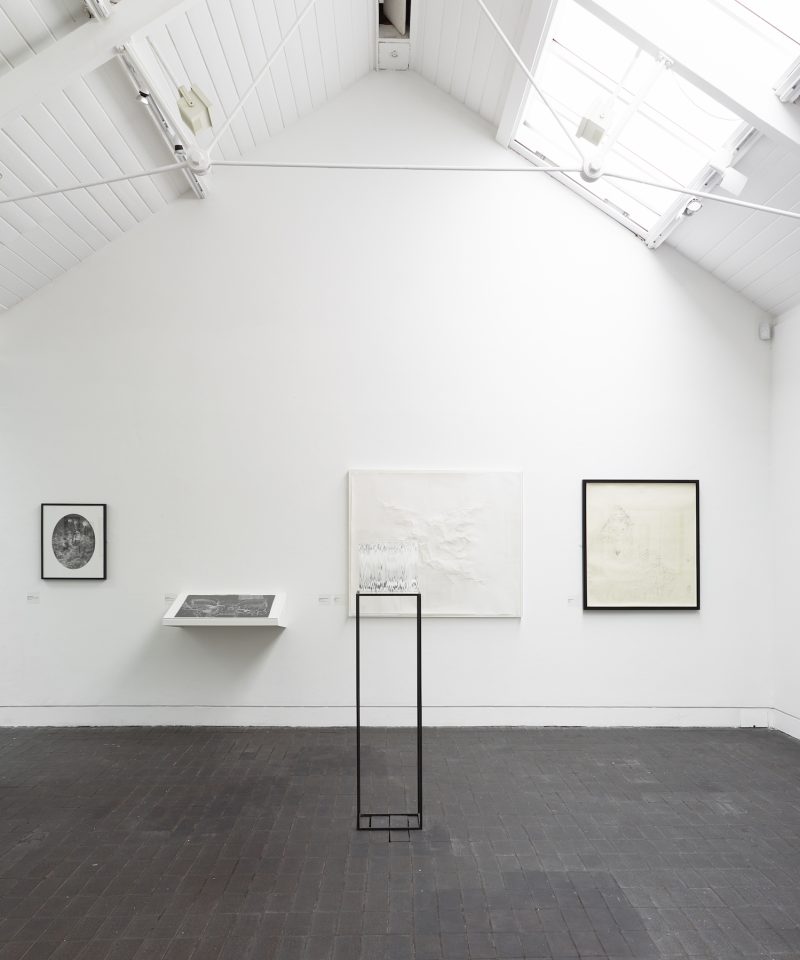I wasn’t at ‘A Singular Line’, a panel discussion of the two video works in the Jerwood Drawing Prize 2015 chaired by Elena Hill. I eavesdropped a couple of days later on SoundCloud. Scribbling notes down on a pad in front of the screen, I watched the recording roll by from left to right, the audio represented by a row of vertical equaliser bars which started as white for unplayed, then slowly shaded into orange.
The recording lasts fifty-one minutes and fifteen seconds; a nicely palindromic number, mirrored by the way the greater height of the bars at the beginning and the end show the audience’s applause. The only thing which gets in the way of the line’s symmetry is a taller bar showing the moment one of the artists, Elisa Alaluusua, moves closer to the microphone suddenly increases the volume. Finer details – the gentle, rain-like sound of cars passing along Union Street and past the gallery – are generalized out, registering on headphones, but not on the screen.
Alaluusua’s film, Unconditional Line, won second place in this year’s Jerwood Drawing Prize. It’s a record of a journey by plane from her home town Luusua, Finland to London, where she now lives and works. Rather than the line of progress the Indiana Jones films use to show flights on a map, the details here are abstracted into a seven-minute record of the grids and patterns on the runway: hieroglyphs from a writing system she admits not to understand beyond the abstract sense that they communicate safety.

I don’t understand the original meaning of these symbols either. Nor do I remember, when I watched it for the first time a couple of weeks before, trying to. Each of them is intersected by the sound of her daughter drawing out notes on the cello – not so much the lines of a melody, but the varying tautnesses of the strings and the bow, slowly and resonantly scraping against each other. I thought about the texture of the tarmac, and the texture of the strings, and how each was a core, running from pegs to bridge, wound round and round with a thinner, spiralling wire. The sound telescopes a distance of a couple of thousand miles into a couple of millimetres, all the more intimately for being a recording by a mother of a daughter.
‘I don’t like looking out of the window’, Alaluusua said of her attitude to travel at one point during the discussion; ‘I’d rather be there if I could.’ If her piece shows a journey through the things at its periphery, Cleaning Up by Sean Maltby very specifically shows the journey itself. The journey, that is, of a rake with a camera attached to it, across different surfaces – the gravel is the noisiest – rattling through the gallery headphones and coming to a stop after one minute and six seconds.

In a review mentioned at various points in the evening, which compared Chinese and European practices of drawing, the Guardian’s Jonathan Jones picked up on Alaluusua’s piece: he ‘would probably be more purist about what constitutes drawing’, and not allow it in. ‘Doesn’t video get plenty of space elsewhere?’ he asked.
What would this purity look like? Reducing things to the marking tool, the marked surface, or support, and the act of making the marks, with whatever motive and design which sits behind it? In the open discussion before the applause at the end, Oliver Fuke – the gallery manager – addressed the first by mentioning Alexandre Astruc’s concept of the caméra-stylo; the idea that directors could use their cameras like a pen and cinema could be a kind of writing. It is easy to imagine how Astruc might have arrived at the analogy: he was both a director and a critical writer about film.
Though often illuminating, comparisons between disciplines – film, writing and drawing in this case – tend to get off the ground by generalising about the constituent parts. Like a hot air balloon, we’ve undoubtedly thrown some important things out as ballast, but we wouldn’t have this usefully elevated perspective if we hadn’t.
Comparing drawing to writing has a tendency to pull both back to the innovations in writing technology and print reproduction around the European Renaissance; the point in history, Maltby suggested in the discussion, when we started to think of the default substrate of drawing and writing as being paper or card. As Jones himself pointed out in both his review and another of the British Museum’s Drawing in Silver and Gold exhibition, the technologies have actually always been more plural than that. His own piece in mind, Maltby mentions the mark-making involved in the Nazca lines in the Peruvian desert, the Chauvet caves in France, or more recently, the stamping and yomping involved in Richard Long’s work.
Having addressed the tool and support, this leaves the act itself. Around 38 minutes in to the recording, Alaluuasua hands Professor Anita Taylor, the Director of the Prize, a marked-up transcript of an interview Taylor gave the British Library’s Artists’ Lives series, and asks her to read it out. Like Maltby, Alaluusua considers her work to be about drawing, and balances the film work with more traditional pieces on paper; Taylor’s definition was instructive for her.

Except it isn’t really a definition at all; it interprets, suggests, and invites contradiction and addition. Taylor argues that drawing is something that articulates a surface and a space, involving a bare ground and a residue moved across it, which can just as much be the light on the surfaces of Alaluusua’s piece as the rake on the surfaces of Maltby’s.
‘I like the word dragan’, Taylor says, ‘which is about dragging something’. For her, this Old Saxon term ‘is at the root of drawing’ as much as the Renaissance Italianate ‘disegno’, which the National Gallery call ‘the ability to make the drawing and the intellectual capacity to invent the design’. The physicality – the action of moving from one point to another – is at least as important to her as the planning behind it. But isn’t the same true of the study of the origin of words? Isn’t etymology also a kind of steady, rolling motion through the unknowable number of people who’ve used a word like ‘drawing’, and off into an equally unknowable future?




